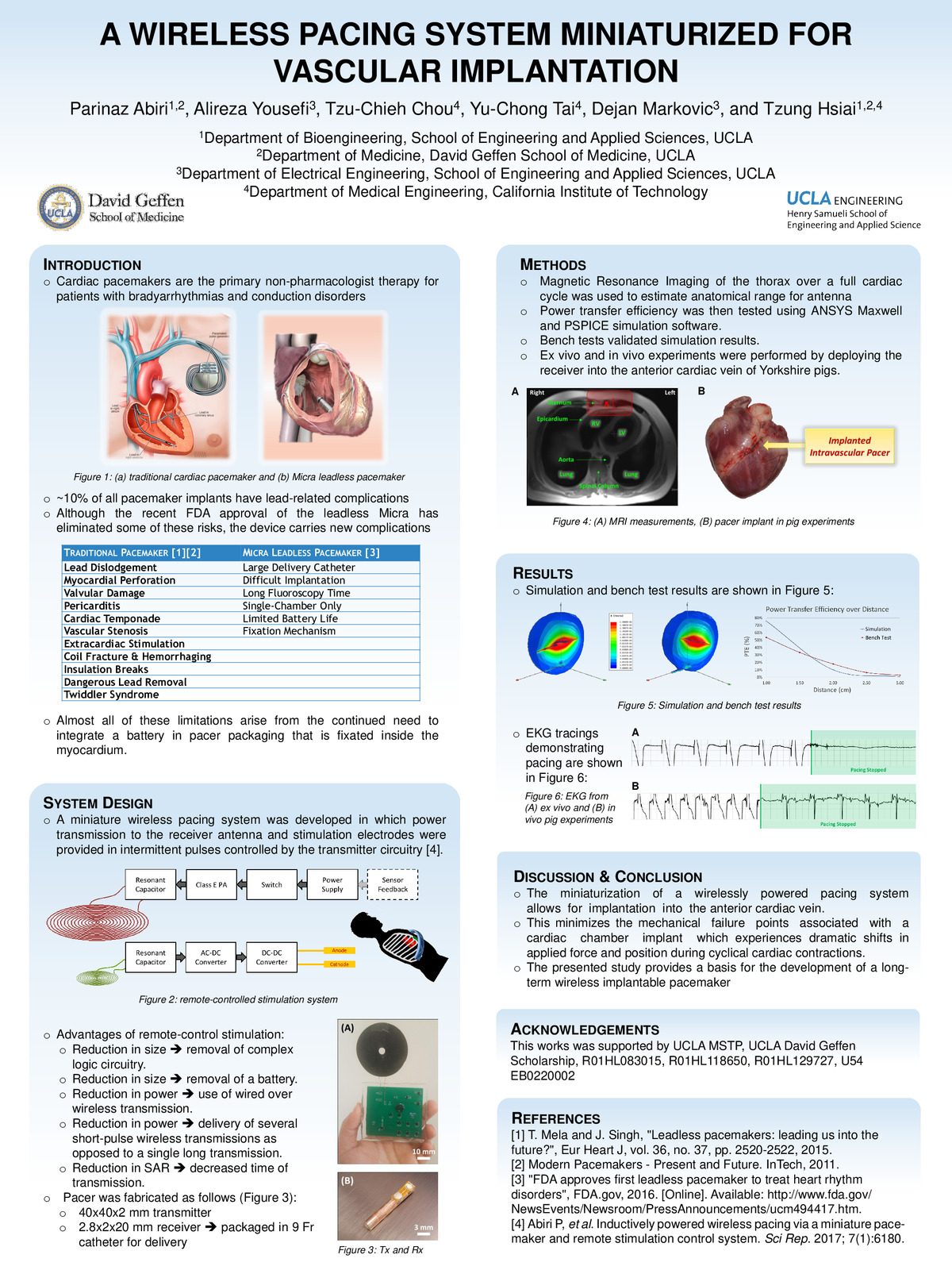-
Author
Parinaz Abiri -
Co-author
Alireza Yousefi, Tzu-Chieh Chou, Yu-Chong Tai, Dejan Markovic, and Tzung Hsiai
-
Title
A Wireless Pacing System Miniaturized for Vascular Implantation
-
Abstract
Introduction: Cardiac arrhythmias and conduction disorders affect millions of patients every year, with nearly 1 million pacemaker implants performed globally to remedy these disorders. Currently, over 10% of pacemakers experience lead-related complications. Leadless devices have been developed that contain small integrated batteries, but these devices introduce new complications. We present a wirelessly powered pacer that is small enough to be fixated inside a coronary vein on the heart, similar to a stent, thus significantly minimizing the repetitive mechanical burden experienced inside cardiac chambers due to high pressure gradients and myocardial contractions.
Materials and Methods: A system is designed such that a pacing unit in the Anterior Cardiac Vein (ACV) is powered via inductive power transfer by a subcutaneous unit implanted in the anterior chest. The system works via remote-controlled simulation in which the pacer size is dramatically reduced, power consumption is minimized (by >1000-fold), and specific absorption rate (SAR) is decreased. Device interactions were simulated to determine sufficient power transfer efficiency over anatomical distances measured via Magnetic Resonance Imaging. The device was then fabricated to the specifications of the ACV, which was limited to a diameter of 3.8±0.7 mm, and ultimately implanted into the heart of a male Yorkshire pig.
Results: The pacer was successfully implanted into the ACV. The EKG of artificial pacing demonstrated the paced wide QRS complex rhythm at 60 and 120 beats per minute with a 20 mm distance between the pulse generator and wireless intravascular pacer.
Conclusions: The introduction of intravascular fixation of a pacer minimizes mechanical failure points associated with high pressure gradients and myocardial contraction-mediated shifts to the in-chamber fixation anchors present in existing pacemakers. These results provide a basis to develop the next generation of wireless long-term implantable stimulators for both the younger and elderly populations.
-
College
AAC
-
Zoom
https://ucla.zoom.us/j/95786269002?pwd=cC9SUUlFODZVbVpVb3hEN1laWXhiUT09
-
PDF

